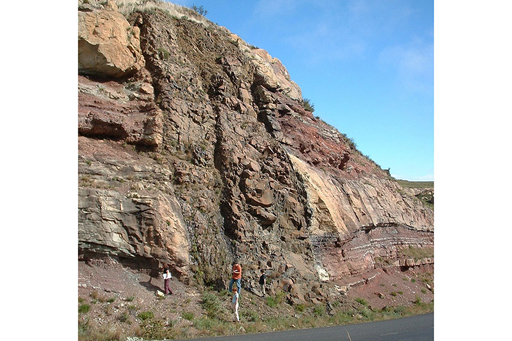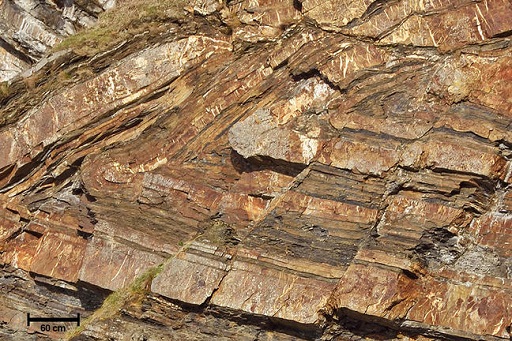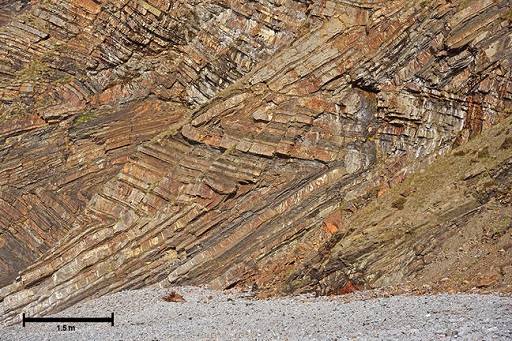1.8.1 Relative dating
Relative dating is simply figuring out which rock came first. In some circumstances that’s pretty simple, like knowing that the sandstone in the cliff below must have been there before the igneous intrusion that has been forced into it.
However, sometimes what looks straightforward can be quite complicated. As discussed earlier this week, sediments are laid down on top of each other, one after the other like the pages of a book, so you might think that in this picture the rock on the top should be younger than the rock at the bottom.
In this case, however, something else has happened – the whole pile has been inverted by processes during plate tectonics, and from further away, you can see that the whole lot has been folded over.



